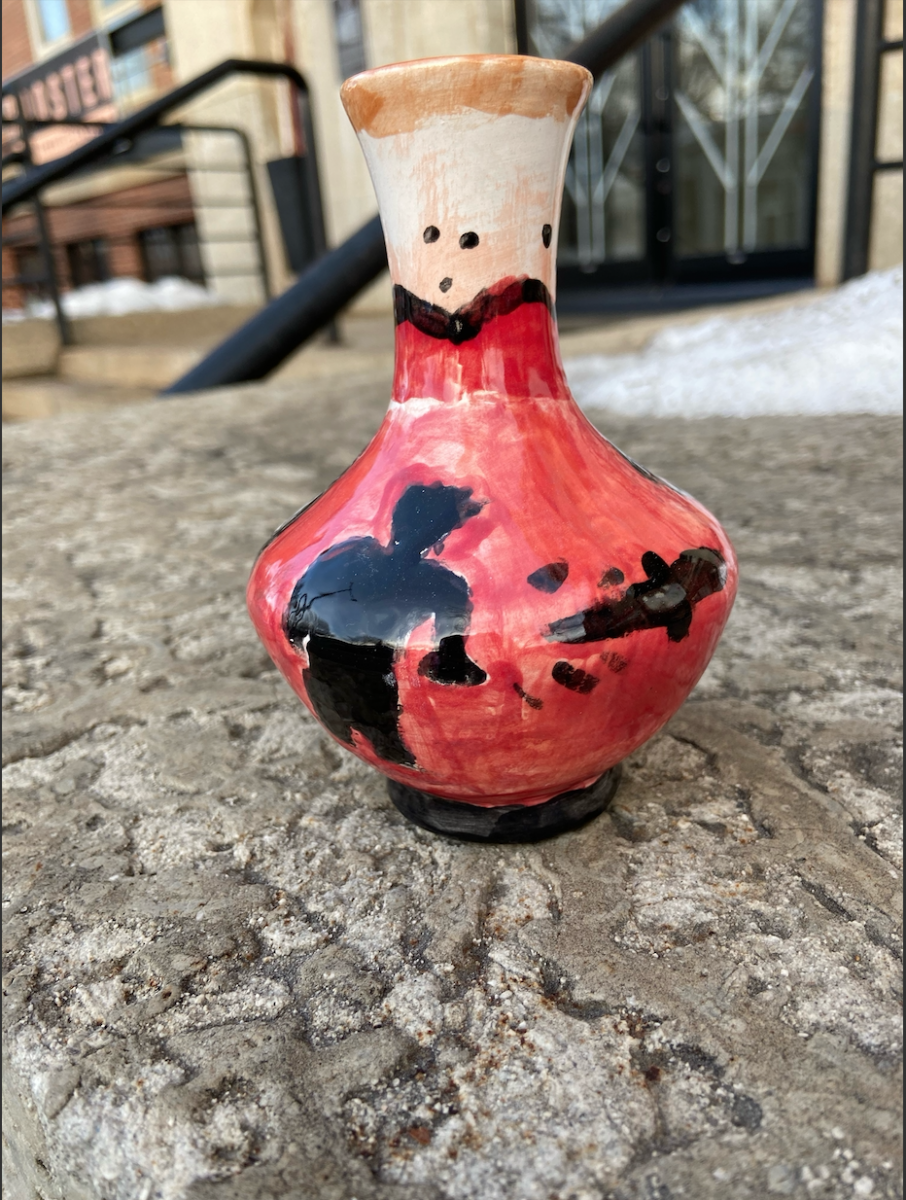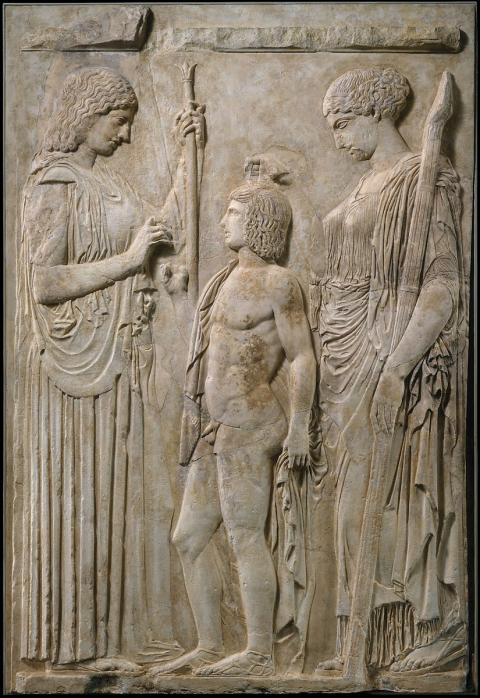Nina Papathanasopoulou
February 26, 2021
The Classics Everywhere initiative, launched by the SCS in 2019, supports projects that seek to engage communities worldwide with the study of Greek and Roman antiquity in new and meaningful ways. Most of the projects funded take place in the US and Canada, though the initiative is growing and has funded projects in the UK, Italy, Greece, Belgium, Ghana, and Puerto Rico. This post highlights projects that foster engagement and education for school-aged children and young adults from California to Canada, Chicago to New York.
Education specialists have long pointed out that children not only learn to talk, but they also talk to learn (see, e.g., Amy B. M. Tsui, Introducing Classroom Interaction). Meaningful classroom interactions and personal engagement with the material studied are vital for students’ understanding, appreciation, and learning. The four projects discussed in this post rely on interactive and hands-on activities to spark curiosity, cultivate creativity, and provide stimuli for further exploration. Each aims to enliven the study of ancient Greece and Rome while bringing out the relevance of the ancient world for communities today.
Archaeology After School
Eva Prionas, Lecturer in Modern Greek in the Department of Classics at Stanford University and Head of the Special Language Program of the Stanford Language Center, is designing and implementing an after-school enrichment program on Greek archaeology and cultural heritage for students aged 10–16 in the San Francisco Bay Area.
The program is interdisciplinary, inquiry-based, and student-centered. A series of online modules and curricular materials will include videos and presentations, as well as collaborative activities related to the topics covered. In a unit on archaeological fieldwork, for example, students will learn how stratigraphers determine the age of artifacts, and they will then create their own stratigraphic project by layering common household materials, such as coffee grounds and beans, in a jar. In a unit on maritime archaeology, students will examine real case studies of ancient shipwrecks to learn about trade in the ancient world, and then chart their own imaginary voyage through the Mediterranean based on the cargo of their ship.
Prionas created this curriculum in collaboration with Grace Erny, Ph.D. candidate in Greek archaeology at the Department of Classics at Stanford University, and Elle Ota, a Development Associate at the Human Rights Foundation who graduated from Stanford University with a B.A. Honors in Archaeology and Classics and an M.A. in Anthropology. Erny, who is currently studying at the American School of Classical Studies in Athens, hopes to draw on the resources of Athens to enrich the course’s content. Erny is responsible for creating the project’s interactive activities, together with Ota, and hopes that the interactive component can help students “to think like archaeologists, drawing on traces of human activity to build compelling narratives and arguments.” They hope, in Ota’s words, that “activities rooted in authentic archaeological practices will help bring students closer to the discipline and enhance their understanding of its real-world applications.”
Funding from the SCS is being used for the program’s pilot phase this April, which will target students from Greek community schools in the Bay Area, Sacramento, Portland, and Seattle. The curriculum aligns with standards for social studies and world language study at California public schools and is endorsed by the Consul General of Greece in San Francisco. The American Association of Teachers of Modern Greek is helping with promotion, professional development, and assessment. As many students will be bilingual, pilot courses will be offered in both English and Modern Greek. The pilot program’s materials will then be made freely available on the project’s soon-to-be-launched website for teachers who wish to adopt the curriculum.
The program aims to make Classics more accessible to students of various backgrounds and to highlight the relevance of the past for the present—both by introducing archaeology and cultural heritage as a bridge between the two, and by raising consciousness about identity and the connection of a diaspora to its roots. Prionas says:
Our goal is to introduce young students to archaeology and its practices so that they can build knowledge and understanding of the past and their heritage, and to work with experts to make connections and understand the relevance and ties to the present.
Classics at the U School
Interested in exposing young students to the study of the ancient world in a fun and meaningful way, Kelly MacFarlane, Teaching Professor of Classics at the University of Alberta, and Michaela Mann, Program Lead at the U School, are also creating programming and interactive activities for school-aged children in their community. MacFarlane collaborates with Mann at the U School, a program at the University of Alberta that brings to campus students from socially vulnerable areas, rural schools, and Aboriginal communities — First Nation, Métis, and Inuit. Together, they offer “Classics at the U School,” a week-long immersion experience on the history and culture of ancient Greece and Rome that allows students to get a taste of university life and the academic environment and encourages them to think about enrolling in university themselves. Classics sessions center on myth and literature, ancient magic and witchcraft, democracy, and daily life in Greece and Rome.
MacFarlane and Mann agree that one of their priorities is to make tangible and real what the students consider theoretical or distant. Since many of the students that participate in the U School program have difficulty finishing high school, their time at the University of Alberta can help them see the benefits of college and make a significant difference for their future. Both of them are thus working diligently to pair discussions and presentations with interactive activities and hands-on engagement. Funding from the SCS enabled the purchase of art supplies and tools to make such activities possible. For example, discussions of constellation myths are paired with a visit to the University of Alberta’s observatory to view the stars and create star charts, while discussions of Greek pottery or Roman spectacle are paired with students’ creating their own pots and models of Roman chariots. Throughout their week on campus, students are also encouraged to keep a journal to reflect on their experiences and find their own voices.

Figure 1: Sketches from a student’s journal during a session on mythical monsters. Photo by Michaela Mann.
The COVID-19 pandemic posed some obstacles in their planning but did not deter them from continuing their program and from doing so with zeal and enthusiasm. This past November, though closed for in-person classes due to the pandemic, “Classics at the U School” worked with 5th- and 6th-graders on a session on myth and Greek pottery. Associate Lecturer of Classics Katy Mackay and Professor of Classics Frances Pownall, both at the University of Alberta, offered recorded sessions on mythical creatures and monsters, Athenian daily life, and styles of Greek vase paintings. Then Mann sent each student a blank vase and art supplies for them to paint on. When the students finished their work, Mann collected the vases, fired them in a special kiln, and returned them to the students.
Mann reflects on the importance of such interactive activities:
What I love about pairing the sessions about Classics with the Greek vase-painting activity is that it creates an opportunity for students to relate with the content. Meeting the researchers, professors and students who are studying [the] life and stories of ancient Greece provides the students with a chance to explore a field of study that they may not have previously considered. Painting the vases gives the students time to reflect on the lesson and, in a tangible way, connect their lived experiences to those of the people from the distant past.

Figure 2: A student’s vase during the “Classics at the U School” programming at the University of Alberta. Photo by Michaela Mann.
MacFarlane hopes that positive feedback from participating schools will allow them to offer eight Classics sessions a year, an outcome that would allow them to engage with over 180 students from under-resourced communities annually.
Classics Sacculus
Lauren Tapper, a high school sophomore at the University of Chicago Lab Schools, is likewise keen to create opportunities for hands-on engagement — especially during this year, when many kids are in school virtually. She used funding from Classics Everywhere to create Classics Sacculus, a bag filled with educational materials and tools for hands-on activities about the origins of democracy in the ancient world: information cards, coloring sheets, and games presenting key facts about Greek and Roman governments, assemblies and institutions, leading figures, and electoral procedures. One game, for example, invites students to make connections between the Athenian ekklēsia, boulē, and dikastēria and the United States House of Representatives, Senate, and judicial branch. The bag also contains beads and instructions for making a Roman necklace, and information on Roman clothing and daily life.
Tapper became interested in the history of democracy through her study of Latin and Classics in high school. Surprised to find out how many of her peers were unfamiliar with the mechanisms and origins of democratic governments, she decided to use an entertaining approach — Classics Sacculus — that would spark curiosity about current and former types of government in elementary- and middle-school students in her neighborhood. As Tapper explains, Classics Sacculus provided “a free, no-barrier-to-access educational opportunity” which she hopes will encourage students to become politically engaged and to consider participating in student government bodies, like Student Council or the Model United Nations organizations that many schools host.
Around 40 bags were distributed through the “Grab and Go” education table at the Sulzer Regional Library in Lincoln Square. The library has an extensive children’s reading room and draws parents and children from across Chicago. Bags were available in the middle of January, just before and after the presidential inauguration, to seize the educational potential of the moment.

Figure 3. Lauren Tapper with her Classics Sacculus at the Sulzer Regional Library in Chicago. Photo by Carolyn Bronstein.
Long Island E-Certamen
Driven by her passion and eager to find opportunities for more interaction between students of Latin and Roman civilization across the US, Vivian Wu, a senior in Jerico High School in Long Island, NY, decided to organize Long Island E-Certamen (LIEC). These are virtual competitions following the format and guidelines of the Junior Classical League (JCL). Along with a number of classmates, Wu organized four e-certamina in 2020 and is now in the process of preparing for a fifth one in March. LIEC, which follow the style of trivia games like Quiz Bowl, have 70 students on average participating and feature questions on Latin and Roman civilization, including history, culture, mythology, literature, and grammar.
Wu participated in her first certamen at SUNY Stonybrook in her first year of high school and loved it. It introduced her to students with similar interests, gave her a competitive drive, and made her want to learn more. When everyone got stuck at home because of COVID, Wu and her fellow organizers realized free, virtual certamina could spark enthusiasm while making Classics accessible for more students. They believe that the competitive environment of the certamen helps drive students to focused concentration. Funding from the SCS will help Wu purchase appropriate textbooks for the Classics departments of schools that are participating, thus reducing economic barriers to participation. Wu sums up their goals:
We hoped that through making it free and open to all students and by offering a competitive environment for students to expand on their knowledge of the Classics, we would be able to increase the number of people fascinated by Classics.
“For what we must learn to do, we learn by doing,” said Aristotle (ἃ γὰρ δεῖ μαθόντας ποιεῖν, ταῦτα ποιοῦντες μανθάνομεν, Nicomachean Ethics 1103a), emphasizing the importance of one’s personal experience in the learning process. These four projects encourage personal interactions and hands-on engagement, even in the unusual circumstances of the pandemic, and focus on learning through doing, seeing, touching, speaking, creating, and collaborating.
Header image: Goddess Demeter and her daughter Persephone give grain to Triptolemos and teach him the art of agriculture. Marble Relief from Eleusis. ca. 430 BCE. Roman copy. ca. 27 BCE – 14 CE. Photo courtesy of the Metropolitan Museum of Art.
Authors


